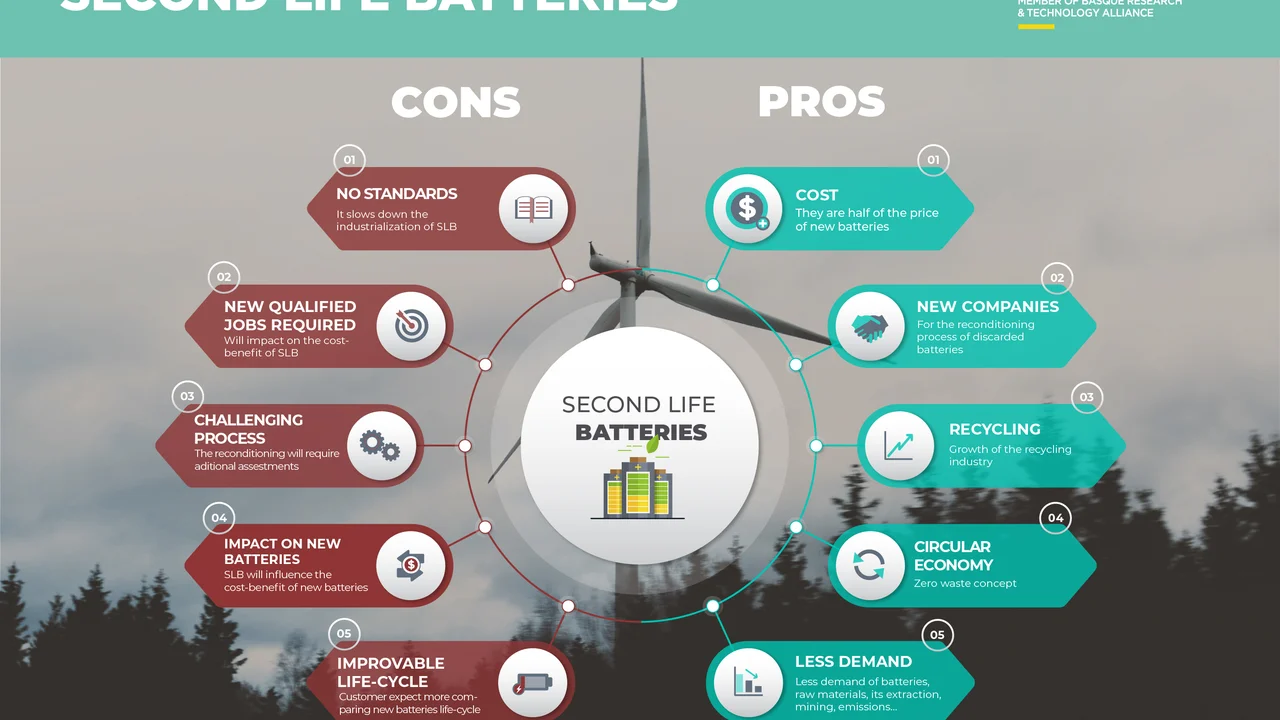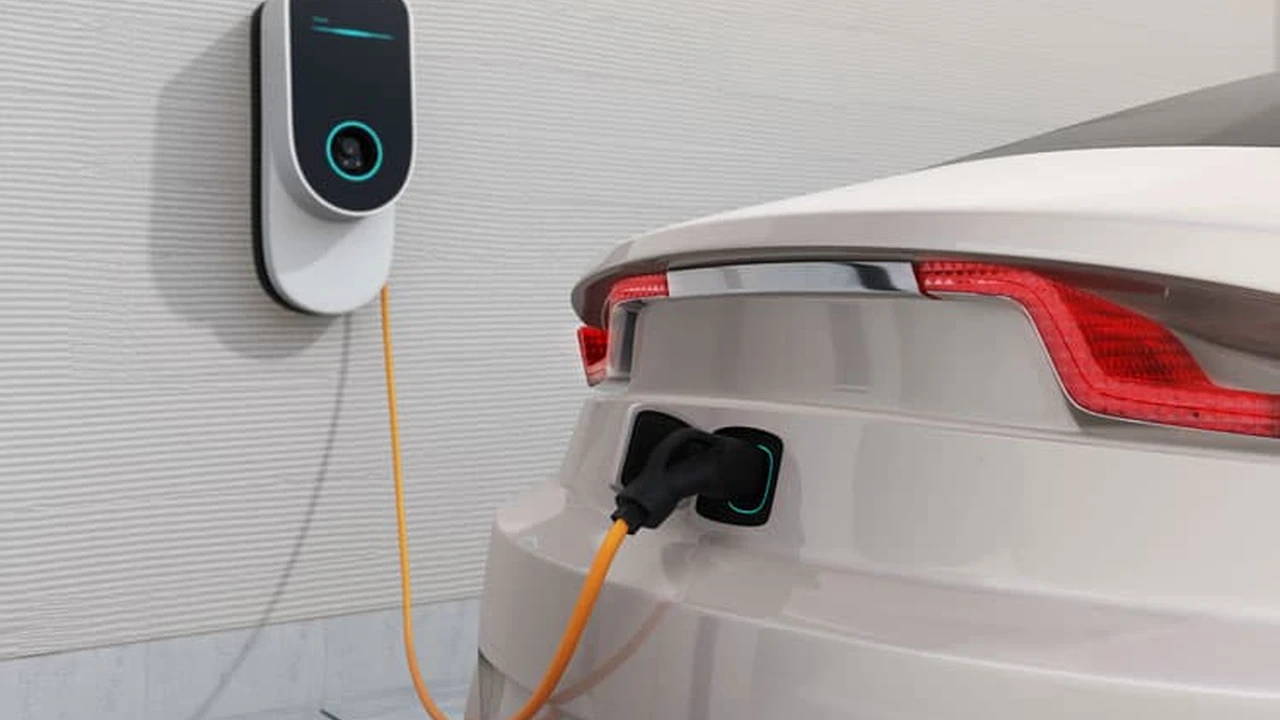EV Battery Recycling and Second Life Applications
Exploring the environmental impact and potential of electric vehicle battery recycling and reuse.

EV Battery Recycling and Second Life Applications
Hey there, EV enthusiasts and eco-conscious drivers! Let's talk about something super important for the future of electric vehicles: what happens to those big batteries once they're done powering our rides? It's a hot topic, and for good reason. As more and more EVs hit the road, the question of battery disposal and sustainability becomes increasingly critical. We're not just talking about throwing them in a landfill – that's definitely not the plan! Instead, the focus is on two main paths: recycling and second-life applications. Both are crucial for minimizing environmental impact and maximizing resource efficiency. So, buckle up, because we're diving deep into the world of EV battery afterlife, exploring the processes, the challenges, and some really cool innovations happening right now.
The Environmental Imperative Why EV Battery Recycling Matters
First off, why is this such a big deal? Well, EV batteries, particularly lithium-ion ones, contain valuable and often rare materials like cobalt, nickel, manganese, and lithium. Mining these materials can be resource-intensive and have significant environmental footprints. Plus, if these batteries aren't handled properly at the end of their first life, they can pose environmental risks due to their chemical components. Recycling these batteries allows us to recover those precious materials, reducing the need for new mining and closing the loop on resource consumption. It's a classic win-win: good for the planet, and good for the economy by creating a more sustainable supply chain for future EV production. Think of it as urban mining, but for batteries!
Second Life Applications Giving EV Batteries a New Purpose
Before we even think about recycling, many EV batteries still have a lot of life left in them, even if they're no longer optimal for powering a car. This is where 'second-life applications' come in. Imagine a battery that's lost, say, 20-30% of its original capacity. While that might not be ideal for a car needing maximum range, it's perfectly fine for less demanding uses. These batteries can be repurposed for stationary energy storage, like backing up solar panels for homes or businesses, or even stabilizing the grid. This extends the battery's useful life, delays the need for recycling, and provides a cost-effective energy storage solution. It's like giving an old dog a new trick – or a new job, in this case!
Home Energy Storage Solutions Utilizing Repurposed EV Batteries
One of the most exciting second-life applications is in home energy storage. Think about it: you've got a solar panel system on your roof, but what happens when the sun goes down? A repurposed EV battery can store that excess solar energy generated during the day, allowing you to use it at night or during peak demand times, reducing your reliance on the grid and saving you money. These systems are often more affordable than brand-new battery storage solutions because they utilize components that have already served their primary purpose. It's a fantastic way to make renewable energy even more accessible and efficient for homeowners.
Product Spotlight Tesla Powerwall vs Repurposed EV Battery Systems
Let's compare a couple of options here. On one hand, you have purpose-built home battery storage systems like the Tesla Powerwall. This is a sleek, integrated unit designed from the ground up for home energy storage. It typically offers 13.5 kWh of usable capacity, comes with an integrated inverter, and is designed for seamless integration with solar. The cost for a Powerwall, including installation, can range from $10,000 to $15,000, depending on your location and specific setup. It's a premium product with a strong warranty and brand recognition.
On the other hand, you have systems built using repurposed EV batteries. Companies like Connected Energy (based in the UK) and B2U Storage Solutions (in the US) are pioneers in this space. They take used Nissan Leaf or Renault Kangoo EV batteries, test them, re-package them, and integrate them into stationary storage units. For example, a system using repurposed Nissan Leaf batteries might offer similar capacities to a Powerwall, but potentially at a lower upfront cost, perhaps in the range of $7,000 to $12,000, depending on the integrator and the specific battery packs used. The key advantage here is sustainability and often a more budget-friendly entry point into home energy storage. The challenge can be finding reputable integrators and understanding the warranty terms for repurposed components, which might differ from new products. However, for the environmentally conscious and those looking for value, these systems are incredibly compelling. They are ideal for homeowners with existing solar installations looking to maximize self-consumption, or for those in areas with unreliable grid power seeking backup solutions.
Grid Scale Energy Storage Boosting Renewable Integration
Beyond individual homes, repurposed EV batteries are also making a big splash in grid-scale energy storage. Imagine a large array of these batteries, collectively storing energy from wind farms or solar plants. This helps stabilize the grid, manage fluctuations in renewable energy supply, and provide backup power during outages. Companies like Audi, in partnership with Hagen Batterie, have experimented with using retired EV batteries from their test vehicles to create large-scale energy storage units for their factories. This not only provides a sustainable energy source for their operations but also demonstrates the viability of such systems. The scale here is much larger, often involving hundreds or thousands of battery modules, and the investment can be in the millions, but the impact on grid stability and renewable energy integration is immense. These systems are perfect for utility companies, industrial facilities, and renewable energy developers looking to optimize their operations and contribute to a greener energy landscape.
The Recycling Process Breaking Down Batteries for Raw Materials
When batteries truly reach the end of their useful life, even for second-life applications, that's when recycling comes into play. This isn't just throwing them into a shredder; it's a complex, multi-step process designed to safely extract valuable materials. There are generally two main approaches: pyrometallurgy and hydrometallurgy.
Pyrometallurgy The High Heat Approach
Pyrometallurgy involves using high temperatures to melt down the battery components. Think of it like a giant furnace. The organic materials burn off, and the metals separate into different layers or slag, which can then be further refined. This method is well-established and can handle a wide variety of battery chemistries. However, it's energy-intensive and can sometimes lead to the loss of some valuable materials through volatilization. Companies like Umicore are major players in this space, recovering cobalt, nickel, and copper from spent batteries.
Hydrometallurgy The Chemical Extraction Method
Hydrometallurgy, on the other hand, uses chemical solutions to dissolve the battery materials and then selectively extract the valuable metals. This method is generally more precise, can recover a wider range of materials (including lithium, which is harder to recover with pyrometallurgy), and is often less energy-intensive. However, it can be more complex and requires careful management of chemical reagents. Companies like Redwood Materials (founded by Tesla's former CTO, JB Straubel) are leading the charge with hydrometallurgical processes, aiming for very high recovery rates of all key battery components, including lithium, nickel, cobalt, and copper. They are building massive recycling facilities in the US, aiming to create a closed-loop supply chain for battery materials. Their process is designed to recover over 95% of the critical materials, which is a game-changer for sustainability.
Challenges and Innovations in EV Battery Recycling
It's not all smooth sailing, though. There are definitely challenges in the EV battery recycling world. One big one is the sheer variety of battery designs and chemistries. Different manufacturers use different cell formats and chemical compositions, which can make a standardized recycling process tricky. Safety is another major concern, as batteries can still hold a charge and pose fire risks if not handled correctly. The logistics of collecting, transporting, and storing these large, heavy battery packs also adds complexity and cost.
However, innovation is booming! Companies are developing more efficient and safer ways to dismantle batteries, automate sorting processes, and improve material recovery rates. There's also a lot of research into direct recycling, where the cathode and anode materials are directly reused without needing to be broken down into their constituent elements, which would be even more energy-efficient. The goal is to make battery recycling as economically viable as it is environmentally necessary, ensuring that the materials from today's EVs can power the EVs of tomorrow.
The Future Outlook A Circular Economy for EV Batteries
The vision for EV batteries is a truly circular economy. This means designing batteries for easier recycling from the start, maximizing their lifespan through second-life applications, and then efficiently recovering all valuable materials when they finally reach end-of-life. This approach not only reduces environmental impact but also creates a more resilient and sustainable supply chain for electric vehicles, lessening reliance on new mining and geopolitical factors. As the EV market continues to grow, the importance of robust recycling and second-life infrastructure will only increase. It's an exciting time to be part of this transition, knowing that the batteries powering our clean transportation future are also contributing to a cleaner planet in their afterlife.
:max_bytes(150000):strip_icc()/277019-baked-pork-chops-with-cream-of-mushroom-soup-DDMFS-beauty-4x3-BG-7505-5762b731cf30447d9cbbbbbf387beafa.jpg)






